Cooley's Looking Glass Self Which of the Follow
Learn vocabulary terms and more with flashcards games and other study tools. Charles Horton Cooley in his work Human nature and the Order introduced the concept of the looking glass self in 1902.

Self Cooley S Looking Glass Self
It can be defined as a persons mental representation of their personality.
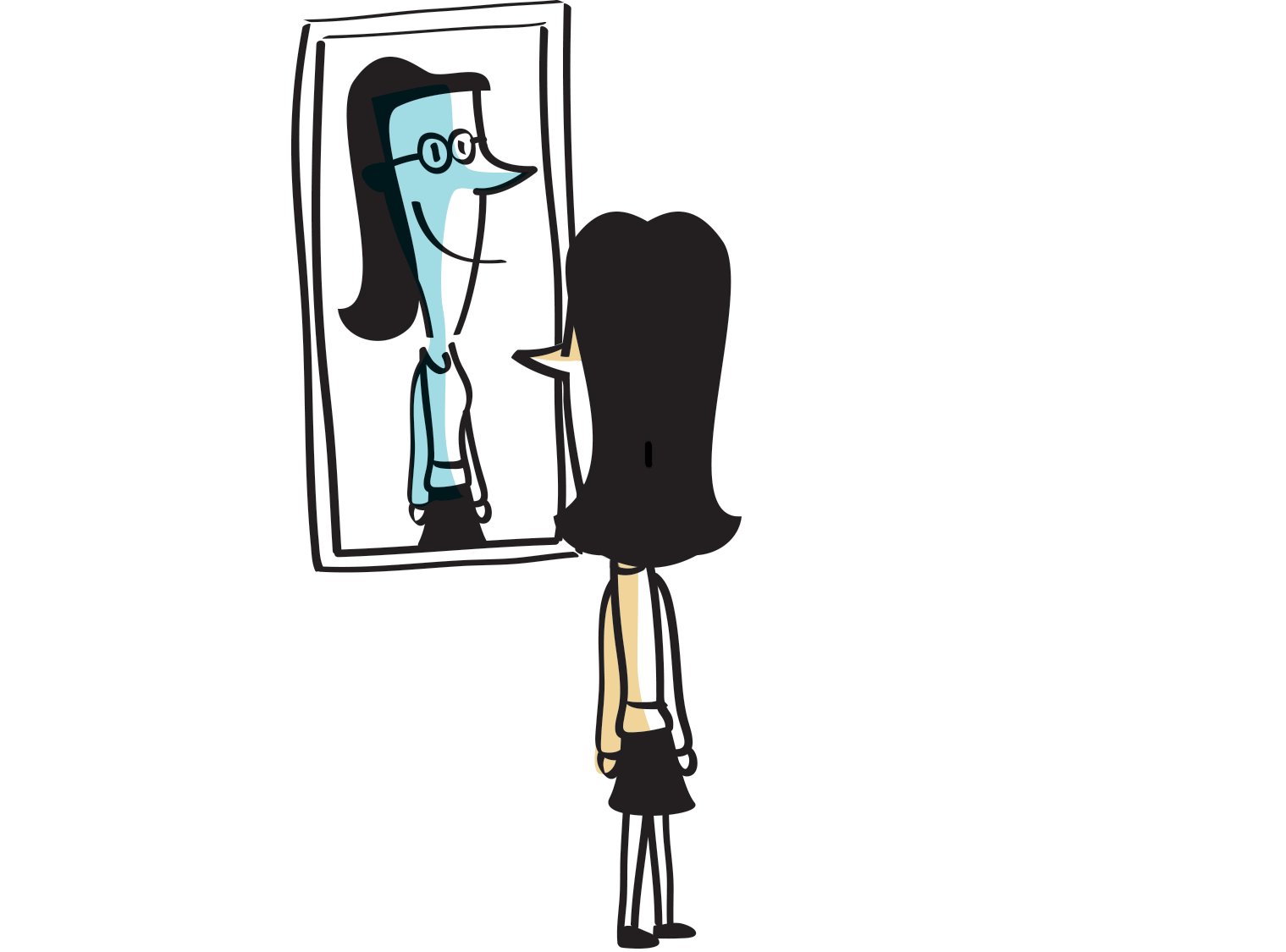
. Charles Horton Cooley - Looking Glass Self. The looking-glass effect or the looking-glass self may be defined as peoples conceptualization of their own views of self based on how they perceive that others view them. Self-feeling has its chief scope within the general life not outside of it.
Cooley 1902 introduced the looking glass self as an individuals self-concept defined in part by societal heuristics. Step one is how one imagines one looks to other people. According to self symbols and society Cooleys theory is notable because it suggests that self-concept is built not in solitude but rather in.
The theory explains that peoples individual identities are. The Looking Glass Self. And 3 whether or not we change our appearance or behavior based on how we think others view us.
View the full answer. Step two is how. Charles Horton Cooley with his family.
2 - How I imagine others judge my appearance the one I imagine in the first place 3 - How I feel prideful or mortified about my imaginations. Or as he himself puts it each to each a looking glass Reflects the other that doth pass. Just like the reflections in a mirror the self depends on the perceived responses of others.
Dr Matts Translation of Cooleys three 3 principle elements of the Looking Glass Self. Discover who Charles Cooley was. According to sociologist Charles Horton Cooley individuals develop their concept of self by observing how they are perceived by others a concept Cooley coined as the looking-glass self This process particularly when applied to the digital age raises questions about the nature of identity socialization and the changing landscape of self.
Cooley and Mead were theorists that created a theory called the looking-glass self. If you are using this from off campus you will need to log in with your LCCC Student IDLibrary card. The looking-glass self is a social psychological concept created by Charles Cooley in 1902 stating that a persons self grows out of societys interpersonal interactions and the perceptions of others.
Cooleys idea of the looking glass self is explained in two steps 1 we. 1 - How I imagine I appear to other people. The term refers to people shaping their self-concepts based on their understanding of how others perceive them.
It is described as our reflection of how we think we appear to others. Charles Cooley with others worked from an interactionist perspective to develop the looking-glass self theory. The special endeavor or tendency of which it is the emotional aspect finds.
Exploring the idea of socialisation unpacking Cooleys ideas and dealing with common mistakes in interpretation. The looking-glass self is a theory developed by Charles Cooley born in 1864 that describes how we each create our own self-image. 2 imagining how others evaluate us.
Looking-glass self Charles Cooleys theory of the self highlighted the ways in which an individuals sense of self is derived from the perceptions of others. We imagine how we present ourselves to others c. 1 imagining how we portray ourselves to others.
The social self is simply any idea or system of ideas drawn from the communicative life that the mind cherishes as its own. It can be explained as the reflection of what we think we appear in front of others or how we are viewed and conceived by others. It emphasizes that the self is a product of our individual decision-making and will power b.
The looking-glass self is a social psychological concept developed by Charles Horton Cooley in 1902 stating that a persons self grows out of societys interpersonal interactions and the perceptions of others. The looking glass self-theory is an example of self-concept theory. 1 how we imagine we appear to others.
3 combining these impressions to formulate a self concept or idea of what we are like Saunders 2013 p67. We imagine how others evaluate us d. QUESTION 6 Which of the following is NOT true of Cooleys looking glass-self concept.
For more information follow the link below. The term looking glass self was created by American sociologist Charles Horton Cooley in 1902 and introduced into his work Human Nature and the Social Order. Share on Twitter Share on Facebook.
Cooley used the old English term for mirror the looking glass as a metaphor to describe an individuals reflection of themselves in terms of their social self Shaffer 2005. He said that our sense of self develops from interaction with others. The definition and examples of.
Cooley used the term to explain the process of socialization. The looking glass self-theory by Charles Horton Cooley 1922 is one of the most influential concepts in symbolic interactionism. Charles Horton Cooley 18641929 a symbolic interactionist who taught at the University of Michigan concluded that the self is part of how society makes us human.
Photo courtesy of the Bentley Historical Library After graduating from the University of Michigan in 1887 Charles Horton Cooley earned a masters degree in economics at U-M and. 2 how we imagine others thoughts or judgments on how we appear. Cooley takes into account three steps when using the looking glass self.
Charles Horton Cooley and the looking-glass self Topics. Charles Horton Cooleys concept of the looking glass self involves three steps that are beneficial to understand the self and society today. Saunders 2013 states that the three steps of this theory are.
Mead essentially contributed to the. The looking glass self describes the process wherein individuals base their sense of self on how they believe others view them. It is derived from the way a person thinks that others perceive them.
Who are we.

Pdf Marginalized Through The Looking Glass Self The Development Of Stereotypes And Labeling
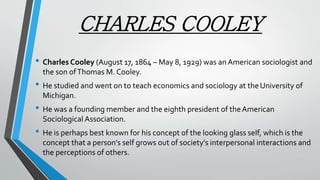
Self Cooley S Looking Glass Self
Looking Glass Self Theory The Social Self

Objectives Understand Distinguish Between And State The Respective Strengths And Limitations Of The Following Theorists Insights Into Human Development Ppt Download
The Looking Glass Self Have You Ever Looked At Yourself In The By Kirby Reardon Medium

Happiness Explained The Looking Glass Self Believing Is Becoming The Looking Glass Self Is A Looking Glass Self Sociological Concepts How To Memorize Things
Looking Glass Self Theory By Cooley Definition And Examples

Introduction To Sociology Soc Ppt Download
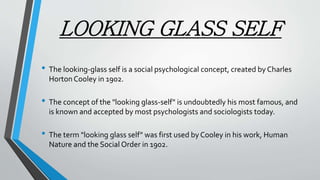
Self Cooley S Looking Glass Self

Hoo Was Cooley How Does Your Social Media Identity Compare To Your Peers

Looking Glass Self Theory Definition Examples Simply Psychology

Social Action Theories Interpretivist Theories Learning Objectives To
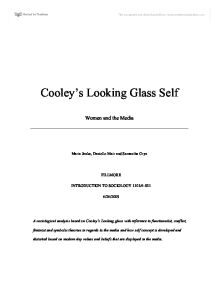
Looking Glass Self Women And The Media University Social Studies Marked By Teachers Com

5 2 The Social Self K12 Libretexts

Looking Glass Self Third Grade Science Classroom Third Grade Science
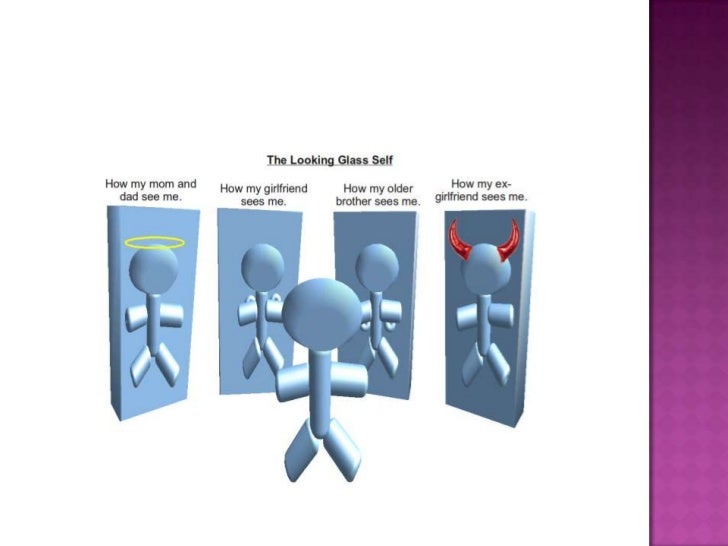
Mead Looking Glass Self Rectoria Unal Edu Co
In Looking Glass Self Theory Who Is Actually Looking At You Quora
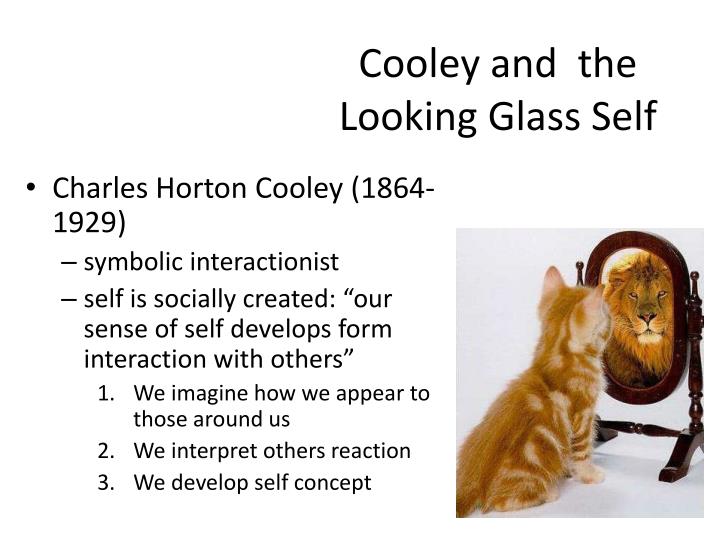
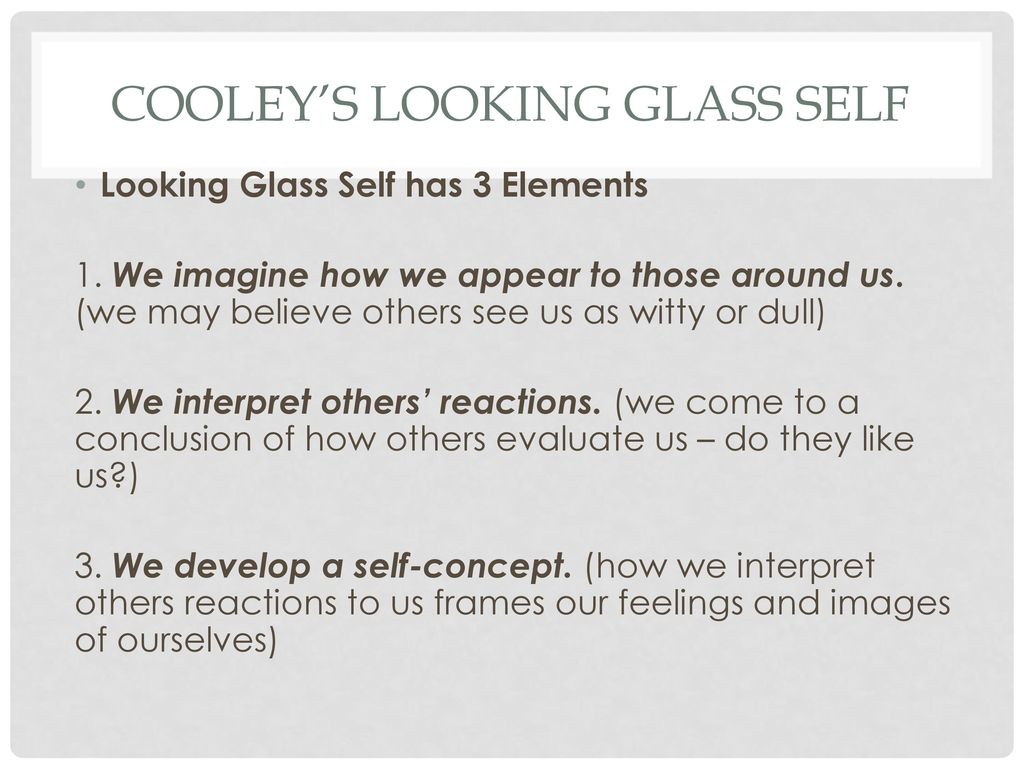
Comments
Post a Comment